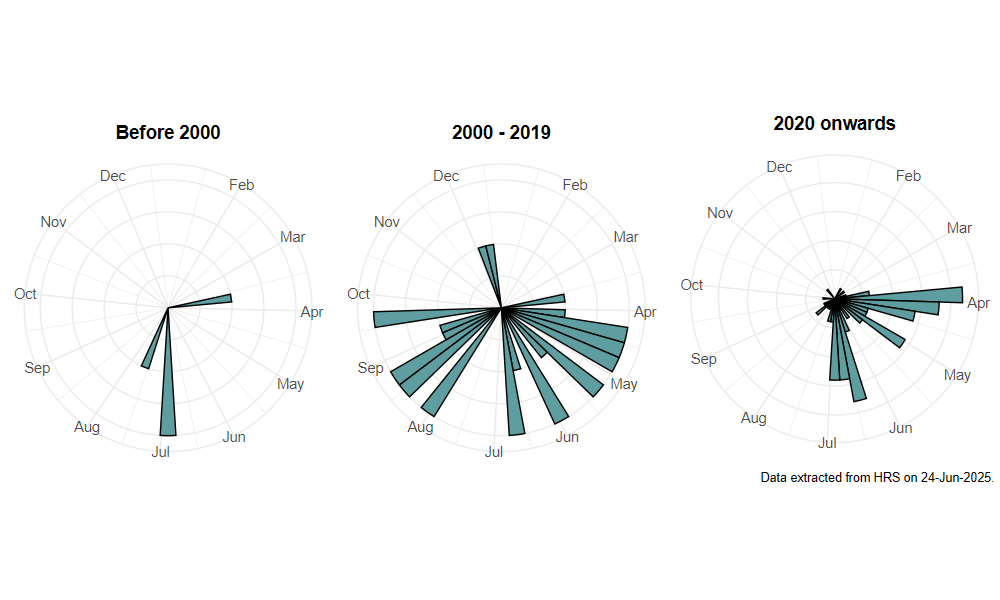Eristalis similis (Fallén, 1817)
Identification
Identification difficulty = 4. ![]()
![]() according to Ball & Morris, 20241
according to Ball & Morris, 20241
Synonymy
Eristalis pratorum (Meigen, 1822) in Falk (1990)2 and Stubbs (1996)3.
Biology
The larva of this species remains undescribed, but other members of this genus are of the 'long-tailed', aquatic type. Single adults have been found on two occasions in a woodland ride and a damp area in a conifer plantation. In continental Europe it is associated with mature to over-mature deciduous forest and Mediterranean evergreen forests. Adult males hover at 2-4m over woodland tracks, and both sexes can be found sitting on sunny trunks or visiting flowers (Speight, 1988)4.
Flight period
The following plots show the number of unique records per week excluding those reported to be of immature stages.

Status
Occasional immigrant.
Distribution
Falk (1990)2 added this species to the British list (as E. patorum) on the basis of a single specimen found in Warwickshire in March 1990. Subsequently, there have been quite a number of records and it appears to be increasingly frequent, but there is little sign of a pattern. It appears to be a casual visitor at the moment and may also be over-looked or misidentified by many recorders.

-
Ball, S., & Morris, R. (2024). Hoverflies of Britain and Ireland. WILDGuides (3rd ed.). Oxford: Princeton University Press. ↩
-
Falk, S. (1990). Eristalis pratorum (Meigen, 1822): a new British hoverfly. British Journal of Entomology and Natural History, 3, 139–141. ↩ ↩
-
Stubbs, A. (1996). British Hoverflies. Second (revised and enlarged) supplement. Reading: BENHS. ↩
-
Speight, M. (1988). Syrphidae known from temperate Western Europe: potential additions to the fauna of Great Britain and Ireland and a provisional species list for N. France. Dipterists Digest (first series), 1, 2–35. ↩